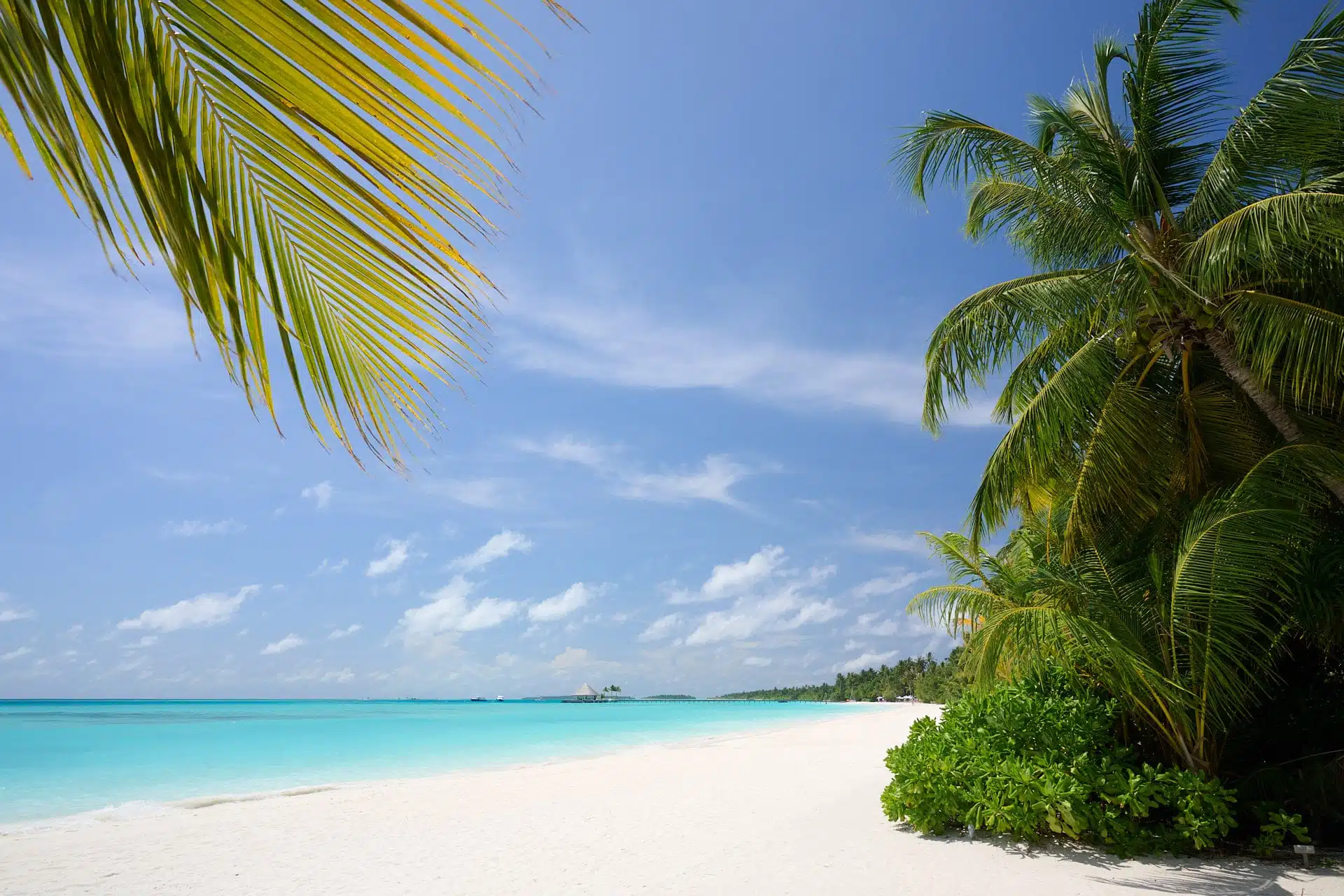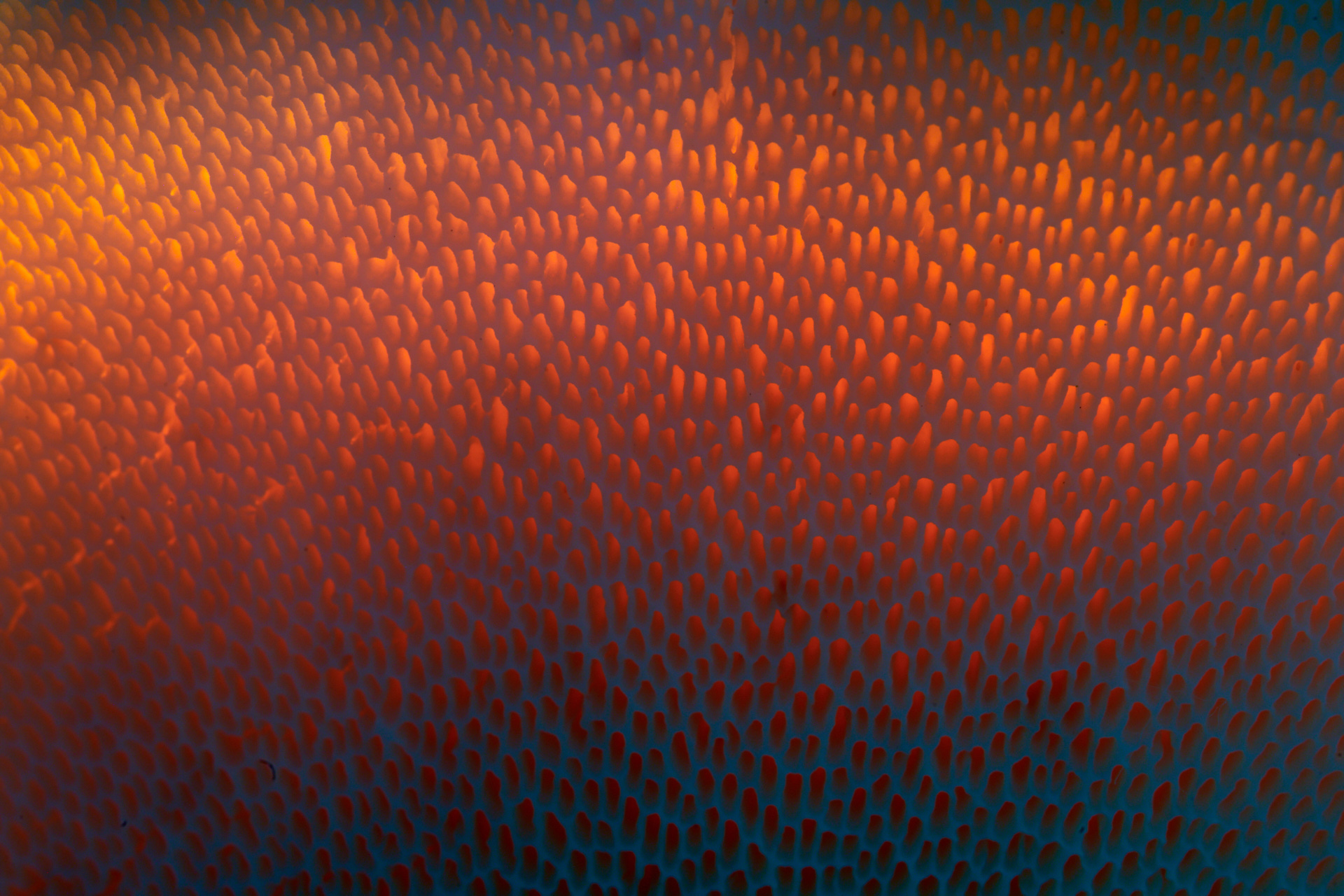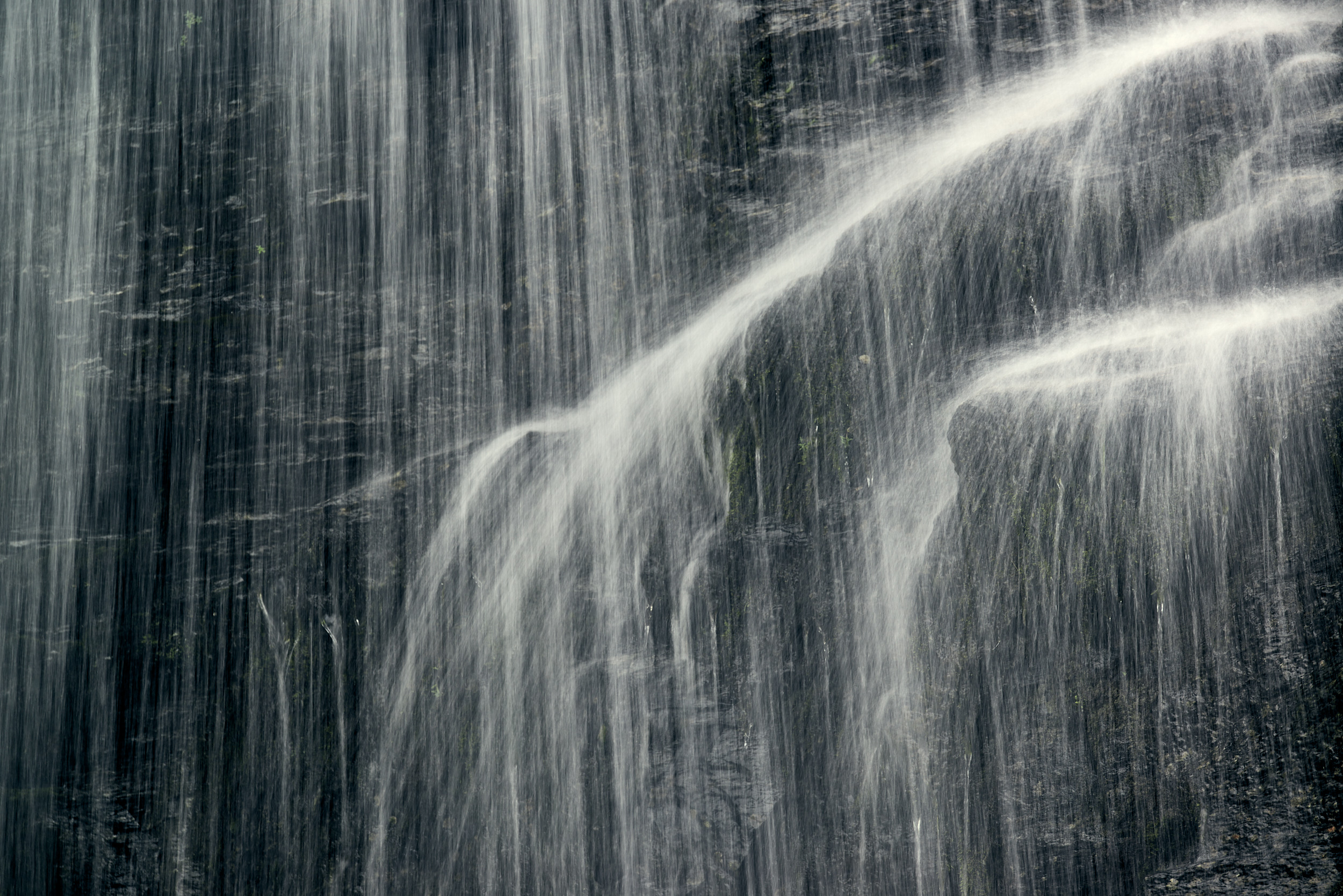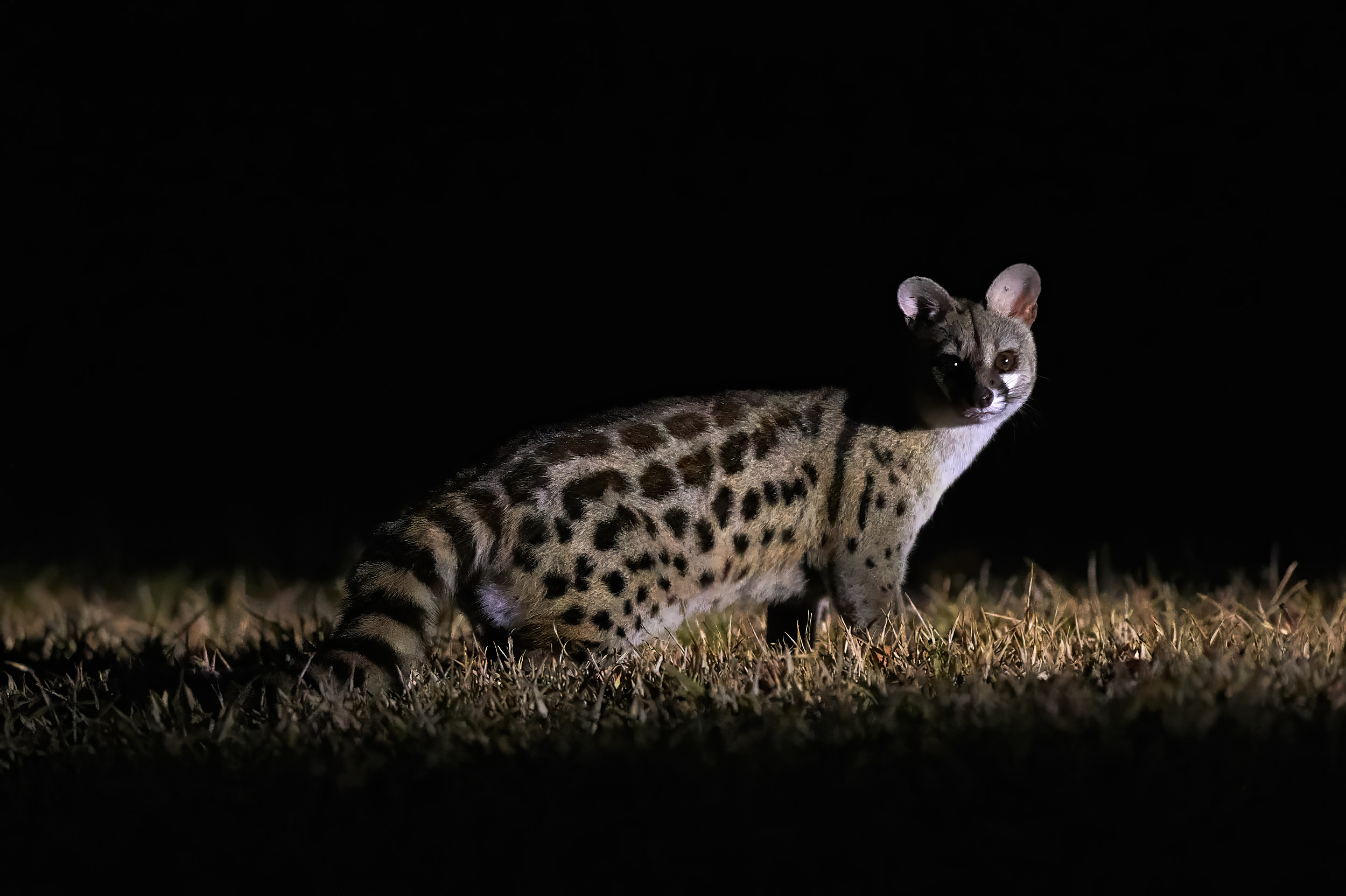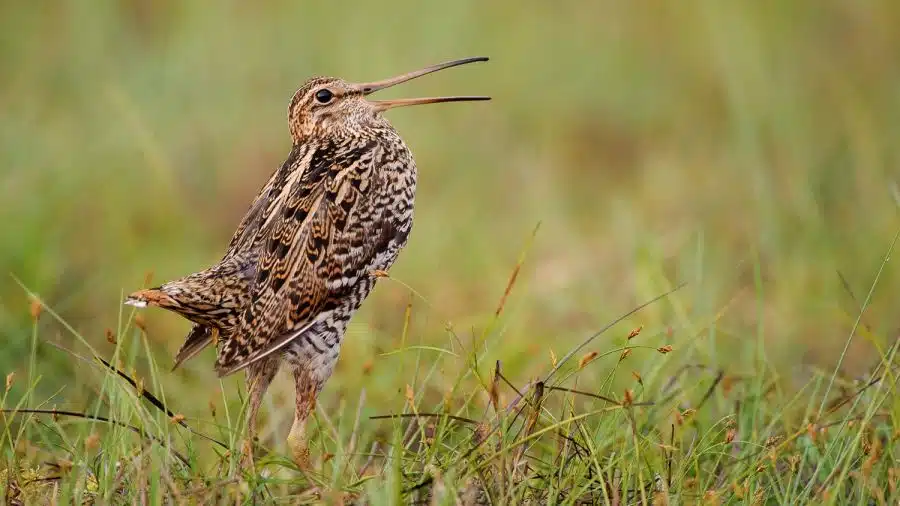Arrival in paradise
I spend the last two weeks of May on Kandima Island, one of the most fascinating resort islands in the Maldives, primarily for relaxation – but of course also for nature photography.
The island stretches an impressive three kilometers in length, but remains surprisingly narrow at just 100 meters wide. The timing for my nature photography vacation is well chosen – just at the beginning of the “low season”, when the rainy season is approaching and the flow of tourists is noticeably decreasing – only 40% occupancy in the already extensive resort. This decision turned out to be a real stroke of luck for my photographic ambitions. The sprawling island with its dazzling white sandy beaches offers exactly the undisturbed atmosphere I am looking for for my nature photography. The well thought-out development of the island is particularly impressive, creating a perfect balance between modern comfort and pristine nature. When building the resort, particular attention was paid to preserving the original natural character of the island – and this has been absolutely successful.
Even during the boat trip from the airport in the Dhaalu Atoll (southern Maldives), I am greeted by a spectacular play of colors. The lagoon presents itself in various shades of turquoise, as if an artist had poured his color palette directly into the crystal-clear water. This is a true paradise for underwater photographers and divers, as the visibility is often exceptionally good and the diversity of species is impressive.
- Arrival in paradise
- Tropical flora and animal encounters
- In search of motifs between mangroves and reef
- Finishing under palm trees
- Conclusion: Nature photography in a tropical paradise

Join me on my photo tours and immerse yourself in the world of wild landscapes and unique encounters. Together we will hone your photographic skills – practical, creative and full of inspiration. Secure your place now and rediscover the magic of light and nature.
Tropical flora and animal encounters
The vegetation on Kan’dinmaa – the original name of the island before the resort opened in 2017 – presents itself as a fascinating subject for nature photography in the Maldives. The characteristic flora of the outer atolls is remarkably adaptable: it defies the salty sea air, is perfectly adapted to the intense sunlight and demonstrates amazing resilience. This unique combination of robustness and tropical beauty opens up a wide range of creative perspectives for nature photographers.
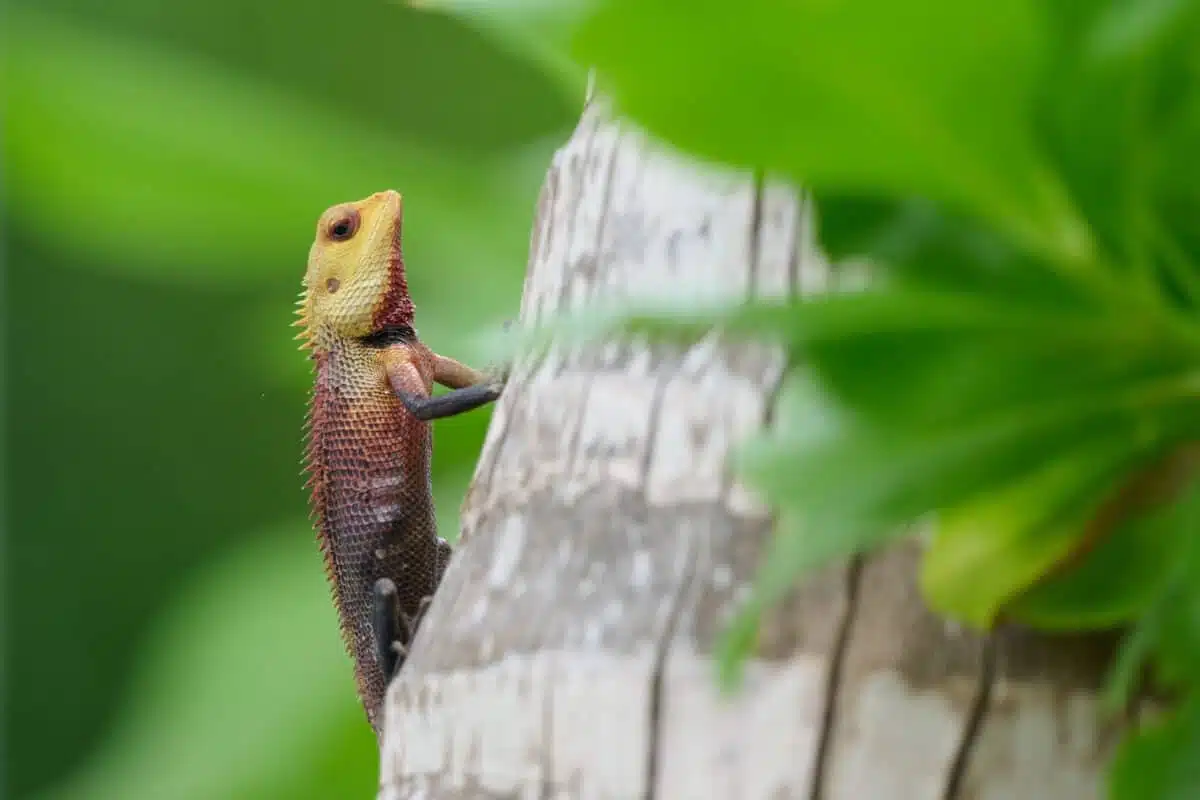
Majestic coconut palms line the picturesque stretches of beach and tower into the azure blue sky. In their shade, the blood-sucking agama(Calotes versicolor) can be spotted and photographed everywhere. This diurnal lizard species adapts its body color to the mood and surroundings and proves to be a very grateful photo motif for nature photographers and is of course also interesting for herpetologists. The best light conditions for impressive close-ups are found in the early morning hours and before sunset under a cloudless sky. When the sky is overcast, the conditions for photographing reptiles are consistently good throughout the day.
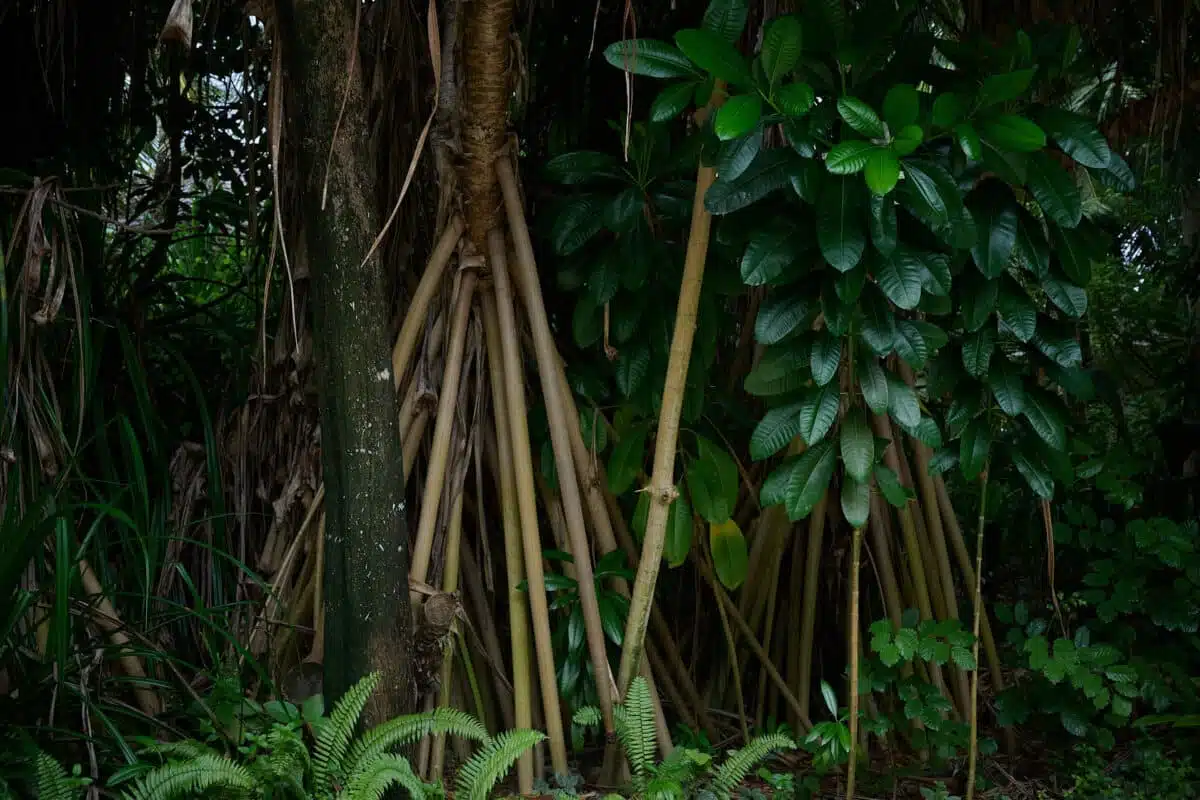
The inner part of the island is dominated by imposing banyan trees, creating a mystical atmosphere. Their characteristic aerial roots, which hang down from the branches, form a natural labyrinth that inspires nature photographers to create creative compositions. These original forest formations, which today can only be found on the larger, less touristically developed islands of the Maldives, not only offer impressive photo motifs, but also important retreats for the local fauna. For a successful nature photography vacation, it is advisable to plan enough time for these special forest sections, as unexpected and unique photo opportunities often arise here.
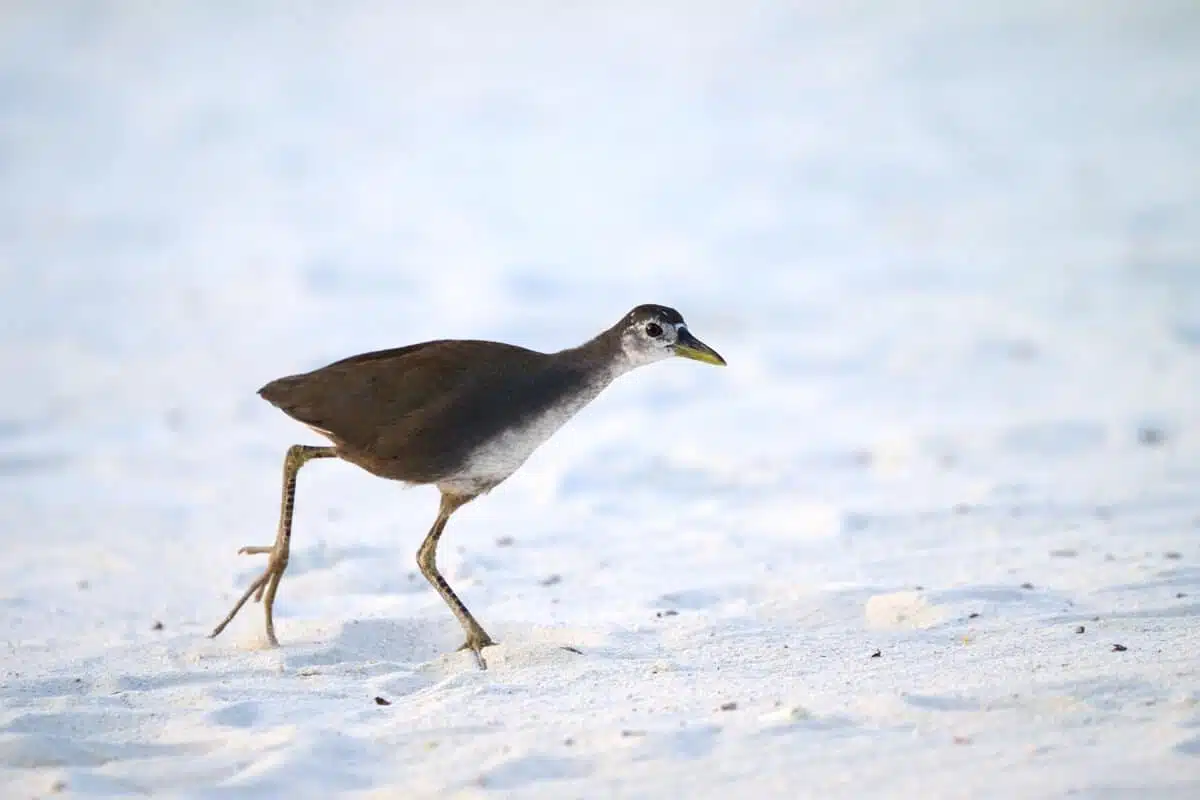
The wildlife of the Maldives reveals itself to the patient nature photographer in all its diversity, even if the terrestrial fauna initially seems manageable. I make a nice acquaintance with the white-breasted water fowl (Amaurornis phoenicurus), which the locals call Dhivehi Kambili. This trusting bird, which not only impresses with its adaptability but is also considered the national bird of the Maldives, proves to be a photogenic subject. With its white breast and distinctive red beak, it moves confidently among the bathers and offers ideal opportunities for authentic nature shots.
The twilight hours belong to the majestic Maldivian flying foxes(Pteropus hypomelanus), which sail elegantly between the palm trees in harmonious small groups. These impressive mammals, whose wingspan reaches up to one meter, offer spectacular photo opportunities at dusk. A special nature photography tip for these fascinating flight shots: it is best to photograph with a high ISO setting and as open an aperture as possible to freeze the fast movements. These gentle vegetarians, which feed exclusively on fruit and flower nectar, perform impressive maneuvers during their smooth, almost silent flight.

For nature photographers, the fascinating interplay of light and shadow of the setting sun offers ideal conditions for atmospheric shots. It is particularly impressive to observe their precise flight maneuvers between the palm fronds and capture them in photographs. Another tip for your nature photography vacation: The best photo opportunities arise around an hour before sunset, when the fruit bats are actively searching for food. With a little patience and the right position, you can capture unique shots of these exciting mammals against the dramatically changing color of the evening sky. For wildlife photographers and nature observers, this is an opportunity to document the natural behavior of these animals in their natural environment.
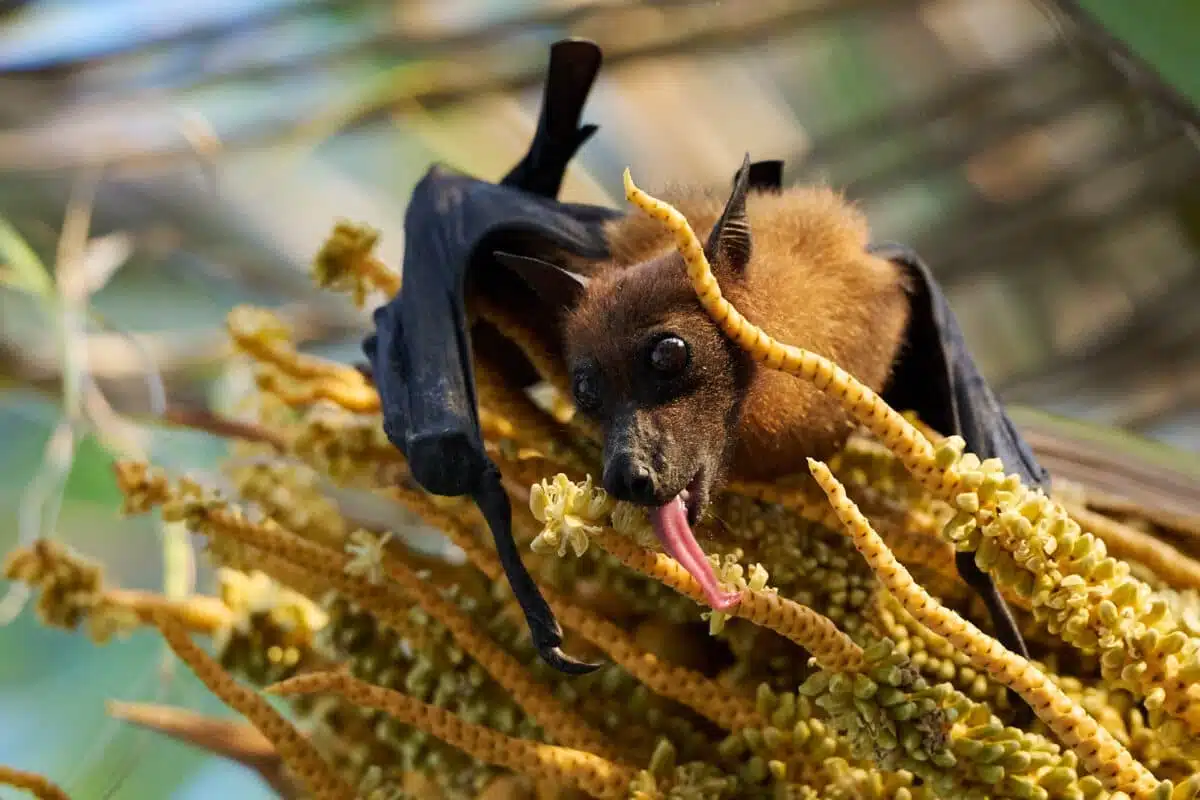
The diversity of island life is revealed during my nature photography vacation even in the smallest details: fat deep blue bees almost as big as a hummingbird buzz from flower to flower and the nimble house geckos(Hemidactylus frenatus) with their almost transparent bodies present themselves as true acrobats on the walls of the resort buildings. For nature photographers, these nocturnal reptiles offer exciting photo opportunities, especially when their fascinating anatomy is captured in the macro range. Another photographic highlight unfolds on the beach every evening, when various species of hermit crabs and land crabs stage their evening parades in front of the setting sun.
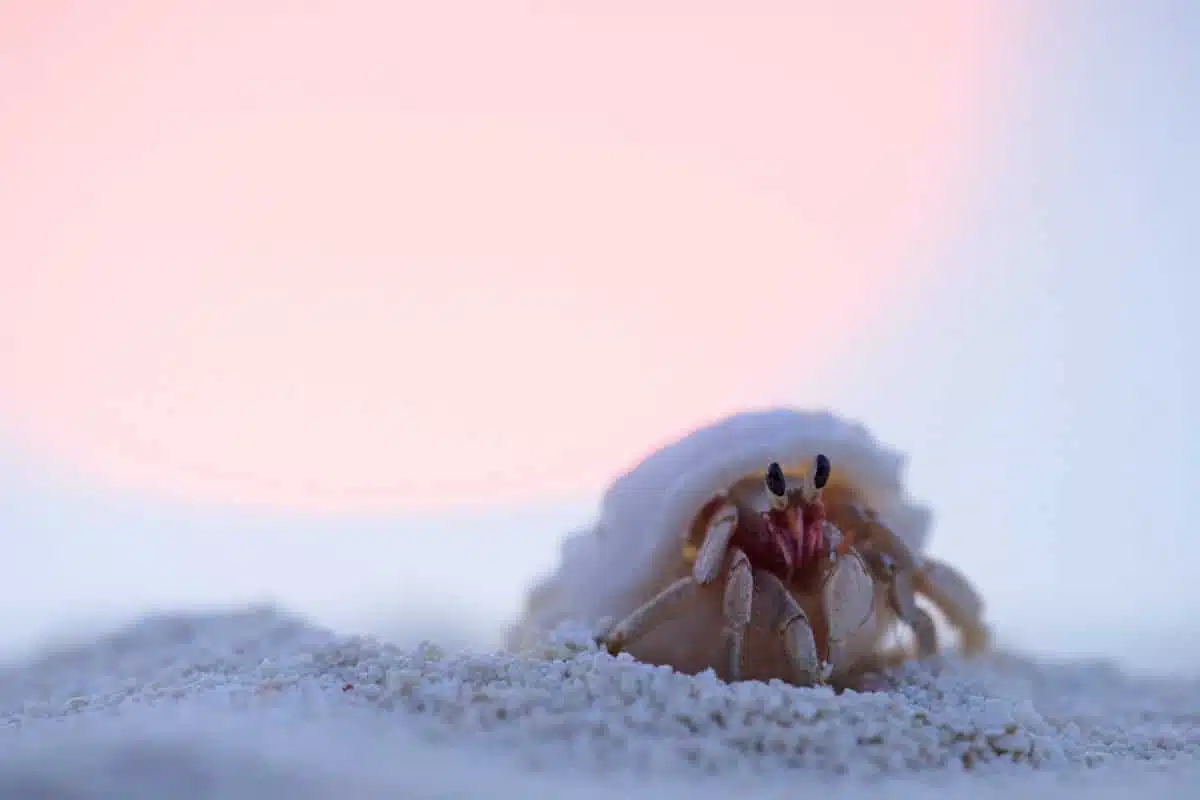
In search of motifs between mangroves and reef
Photographic exploration of the island proves to be particularly productive on leisurely bike tours, as you can explore every corner at your own pace and use your camera equipment flexibly. The resort rents out bikes for a small fee. A particularly rewarding nature photography tip leads to a hidden path at the western end of the island, which opens up like a natural portal into a mysterious coastal forest. This habitat, characterized by dense mangrove vegetation, presents a completely unexpected side of the Maldives that is very different from the typical postcard motifs. Between the bizarrely shaped aerial roots and the swampy ground, surprising perspectives emerge – not only of the diverse fauna, but above all of the fascinating organic forms that present themselves to the camera like natural sculptures.
The rainy season turns out to be a real stroke of luck for nature photography in the Maldives, as it is by no means characterized by continuous rainfall. Instead, the tropically changeable weather creates an extraordinary photographic variety. The occasional cloud cover acts as a natural diffuser, which helps to soften the extreme contrasts, especially when photographing in the dense mangrove forest. These optimal lighting conditions also allow for creative shots during the daytime hours – a welcome contrast to the otherwise often harsh lighting situations and washed-out colors of the midday sun. For wildlife photographers and nature travelers, this time also offers the advantage that many animals are more active during the day and do not retreat from the scorching heat.
A nature photography tip: Using a polarizing filter helps to minimize distracting reflections on the damp leaves and to optimize colour saturation.
Snorkeling and diving turned out to be one of the most fascinating parts of my photo trip. Under the guidance of an experienced instructor from the Aquaholics team on Kandima, I spent several days exploring the diverse underwater landscapes of the Dhaalu Atoll. Every single dive tells its own story and opens up unique perspectives for underwater nature photography. From the protected shallow water reefs at the end of the island, which are particularly suitable for beginners in underwater photography, to the dynamic outer reefs such as Vaanee Beyru or Kandima Corner – Dhaalu Atoll is a true paradise for nature photographers and divers alike.
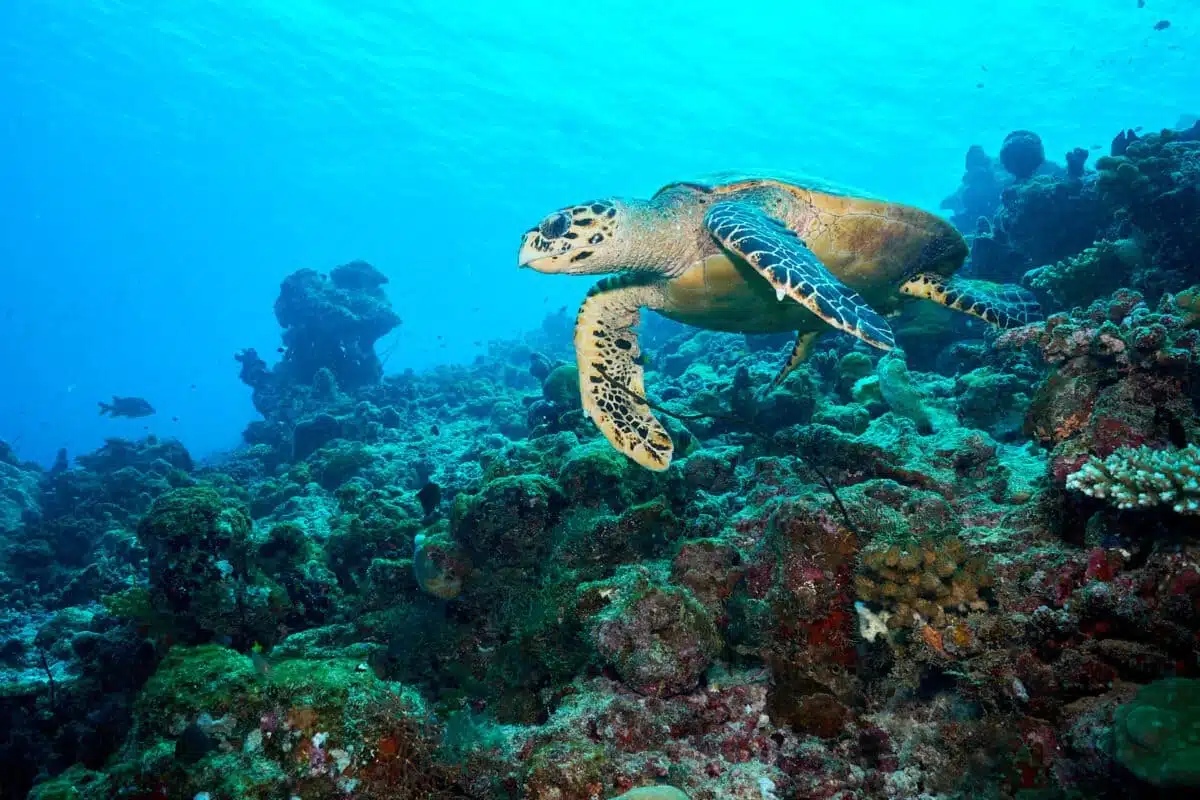
A particularly impressive photographic experience takes place during a dive at the pinnacle of Kuda Thila. There I had the opportunity to observe and photograph a green sea turtle having a leisurely meal on a soft coral, a highlight for me. The scene is enriched by a lively ensemble of iridescent bannerfish, while elegant fusiliers gliding through the water and playful anemonefish complete the underwater spectacle. Other dives bring exciting encounters with hunting whitetip reef sharks and eagle rays sailing majestically through the current. Unfortunately, the conditions for full-frame shots of these fast sea creatures are not ideal – a common dilemma in underwater nature photography.
The underwater visibility conditions are subject to daily fluctuations during my nature photography vacation, and the days with the characteristic “marine snow” in particular do not exactly make photography any easier. This remarkable natural phenomenon, which is made up of a complex mixture of plankton, organic suspended particles and microscopic algae particles, transforms the underwater world into a mystical landscape.
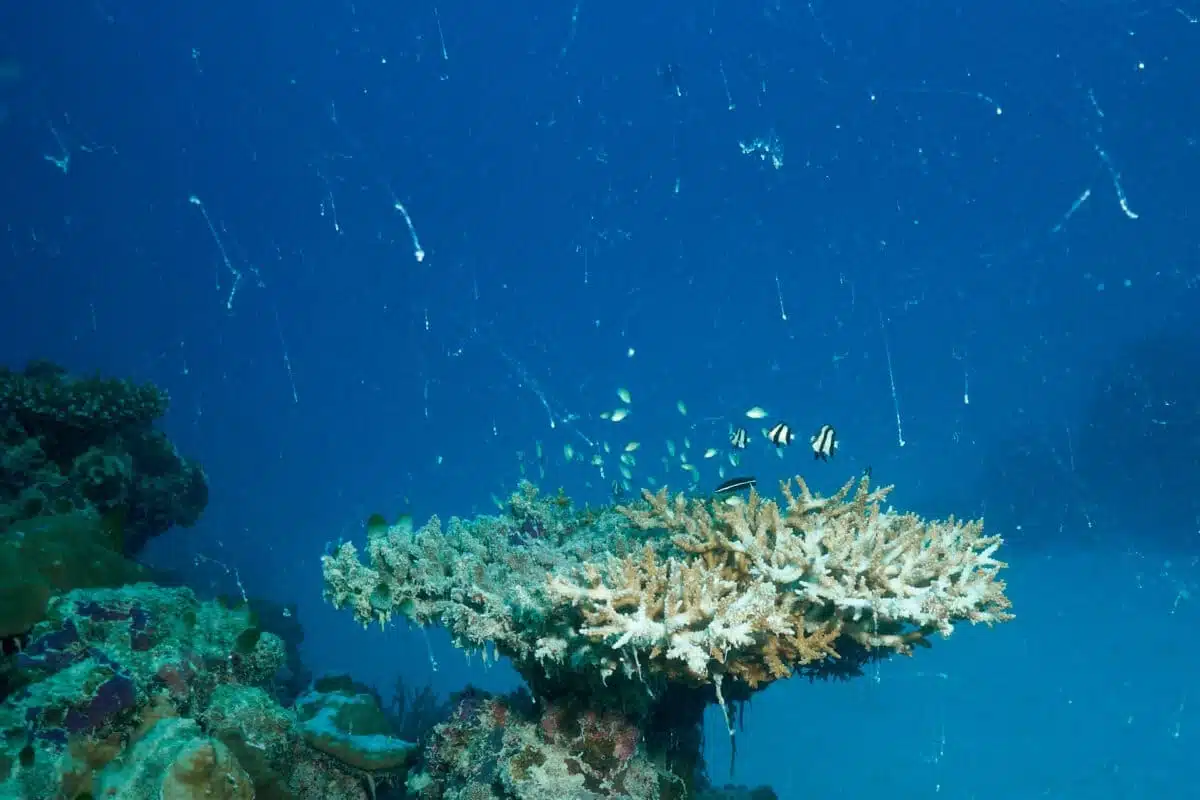
For nature photographers, this fine, floating veil of particles in the backlight opens up very special creative perspectives. Although the surreal atmosphere poses a technical challenge for underwater photography, it also offers unique opportunities for unusual image compositions. The diffuse light situation requires special attention when setting the exposure and directing the flash, as the particles quickly reflect the light too much and simply disturb the image as white dots.
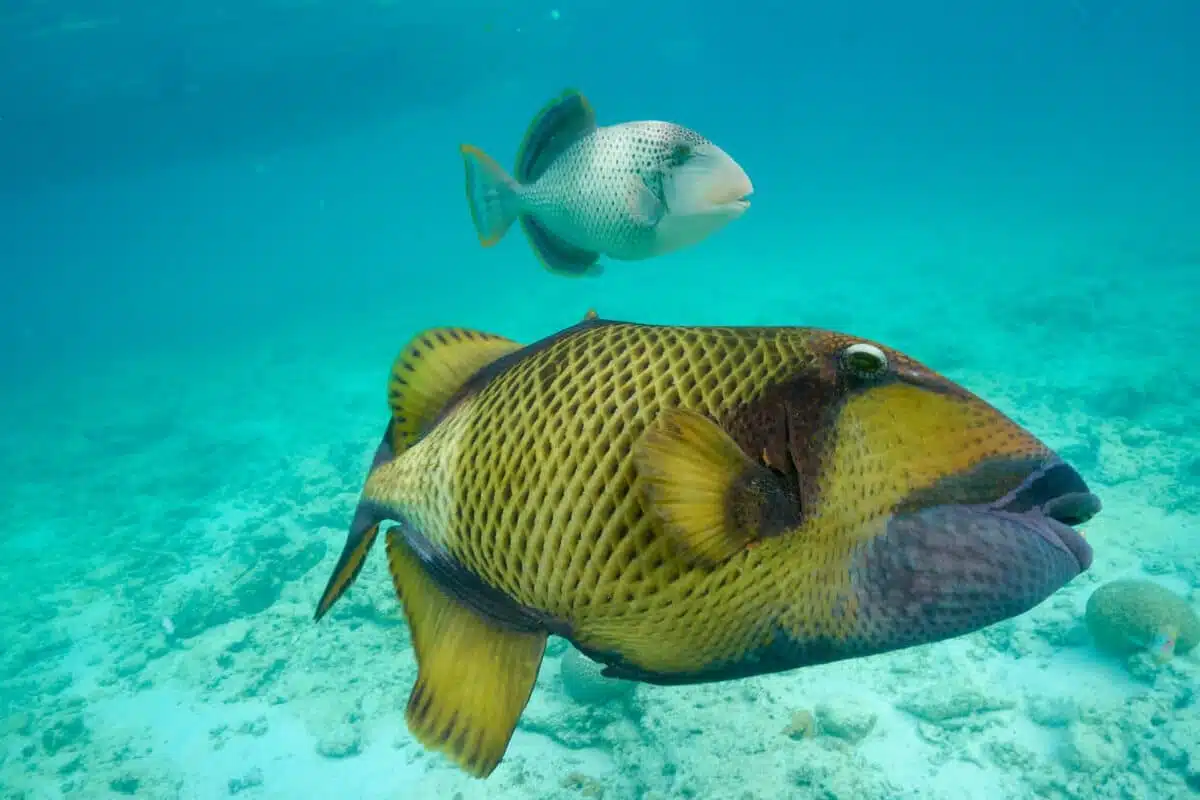
The various dive sites of the Dhaalu Atoll present their unique characteristics during my nature photography vacation: Kandima Corner impresses with its powerful current dynamics and a remarkable variety of impressive large fish – a paradise for passionate underwater photographers. The island’s extensive house reef enchants with its calm, colorful underwater world, which offers ideal conditions for beginners in nature photography. The Vaanee Beyru reef offers fascinating encounters with various shark species during relaxed drift dives – perfect for photographers who want to document these majestic predators. All the spots are teeming with shimmering schools of surgeonfish, lively fusiliers in formation, magnificent parrotfish, majestic angelfish and graceful butterflyfish – a lively kaleidoscope of the tropical underwater world.
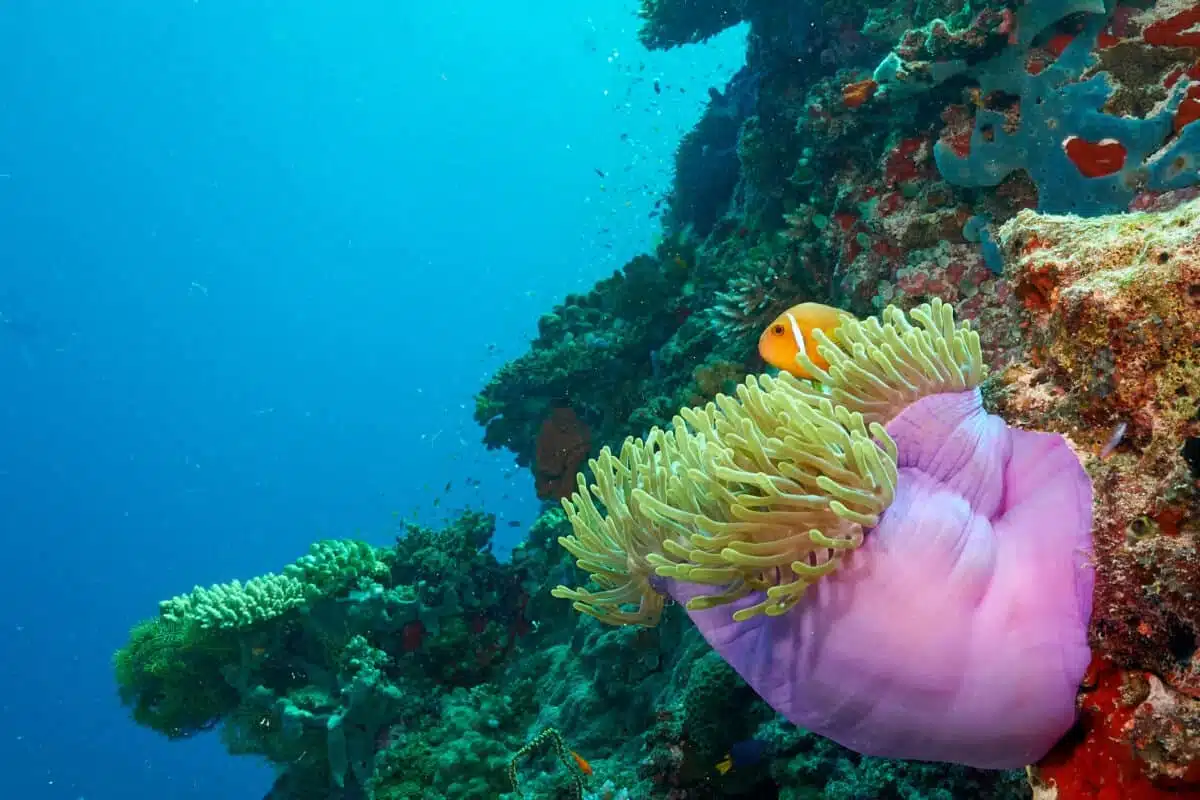
My equipment for underwater photography
For underwater photography, I rely on the Sony A6300 in the robust Seafrogs Saltedline housing – a reliable combination for demanding nature photography in the Maldivian waters. The versatile Sony 10-18mm wide-angle lens proves to be the right choice for atmospheric underwater shots, while two powerful Sea&Sea flashes optimally illuminate the colorful reef inhabitants. The 6″ dome port effectively minimizes distortion in wide-angle shots while remaining agile enough for dynamic underwater manoeuvres – particularly important when tracking agile sea creatures. This combination of equipment enables me to capture challenging backlit situations as well as macro scenes of the tropical underwater world.
See also my test report on the Saltedline underwater housing!
Above water, I rely on the Nikon Z8, which, with its outstanding image quality, precise autofocus and fast continuous shooting rate, proves to be the ideal companion for the diverse photographic challenges of the island world. My 24-70mm f/4 impresses with its excellent sharpness and reliable autofocus for spontaneous everyday scenes, atmospheric landscape shots and documentation of the unique island culture.
For nature photography of the island fauna, I rely on the 180-600mm telephoto lens, which with its range and effective image stabilizer also captures shy island inhabitants such as herons, frigate birds and the fascinating flying foxes in extraordinary detail. The 150mm macro lens opens up the fascinating world of tiny creatures and allows me to take breathtaking close-ups of tropical wonders – from the delicate flower details of exotic flora to the remarkable structures of small beach dwellers such as crabs, snails and the diverse world of insects.
The 16-35mm wide-angle lens complements my nature photography equipment perfectly and proves to be indispensable for the dramatic landscape shots of the vast stretches of beach, the majestic palm groves and the spectacular sunsets over the Indian Ocean. Its light intensity and wide angle of view enable me to capture the vastness of the tropical landscape impressively.
A polarizing filter completes the equipment and optimizes the characteristic tropical contrasts and vivid colors of the island world. It is particularly indispensable for nature photography over water to reduce distracting reflections and intensify the color brilliance of the vegetation.
Finishing under palm trees
The last day of my photographic expedition in the Maldives begins with an ambitious plan: searching for young reef sharks in the morning surf. Equipped with snorkeling gear and a waterproof camera, I venture as far as the picturesque Water Villas, but nature has other plans. A relentless current makes progress considerably more difficult, while the limited visibility caused by swirling sand and the coral-covered seabed make the underwater shots I had hoped for impossible.
So I swap the camera for the Z8 with the 24-70, screw on the polarizing filter and can at least photograph the hunting sharks from above the surface of the water.
Such experiences characterize nature photography – not every planned motif can be captured, but each of these encounters enriches the photographic experience and sharpens the eye for the unpredictability of nature.
With a memory card full of unique nature photography moments and a camera housing that has been marked by salt water but is still reliable, I make my way back to Malé. As a nature photographer, the short flight in the seaplane gives me another opportunity to capture the picturesque island world of the Maldives from a bird’s eye view – a breathtaking finale to this photographic journey. The few minutes in the air reveal a fascinating mosaic of turquoise lagoons, white sandy beaches and lushly overgrown islands that are strung together like pearls in the deep blue ocean.
Kan’dinmaa proves to be a true paradise for photographers during this nature photography vacation. Far more than just a luxurious resort, the island presents itself as a living ecosystem in which the fascinating underwater world and terrestrial fauna meet in perfect harmony. The diverse photo opportunities range from courageous water hens defending their territories between the villas to majestic flying foxes gliding silently through the twilight.
Conclusion: Nature photography in a tropical paradise
Kandima Island – or Kan’dinmaa – is more than just an exclusive resort in the Indian Ocean. For nature photographers, it reveals itself as a place full of contrasts, colors and tranquility. Between shady mangrove paths, golden beaches and the dazzling underwater world, a unique photographic microcosm is created that rewards patience, curiosity and creativity. It’s not just the spectacular motifs that make this place so special – it’s the tranquillity between moments, the interplay of light and weather, the unpredictable animal behavior. The trip not only rewarded me with extraordinary shots, but also reminded me that good nature photography requires one thing above all: respect for the subject, time – and the willingness to let nature guide you.

